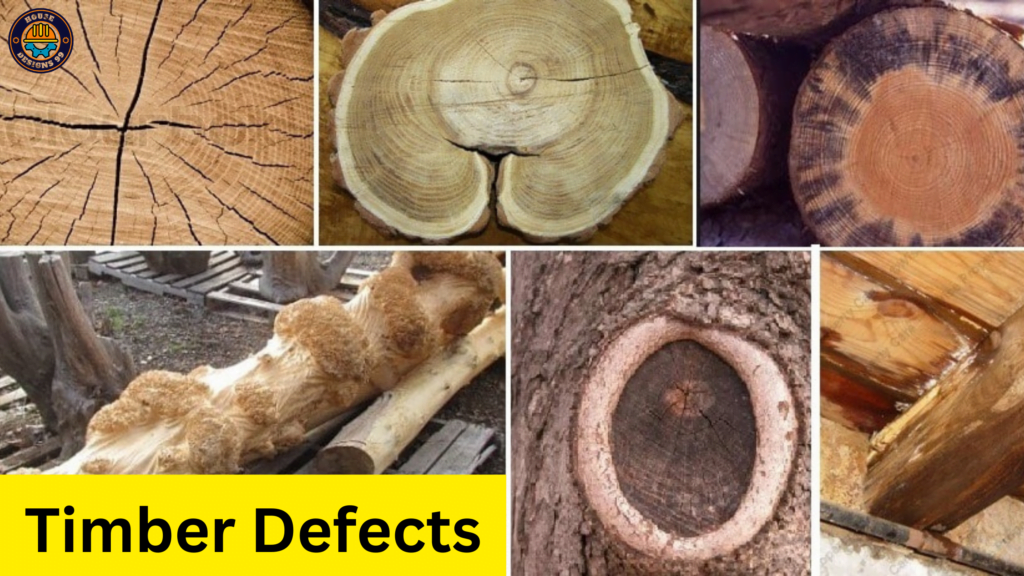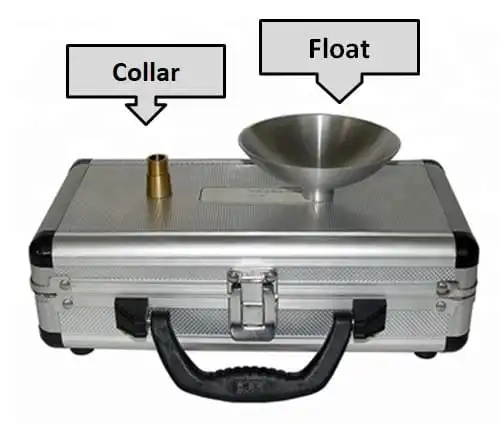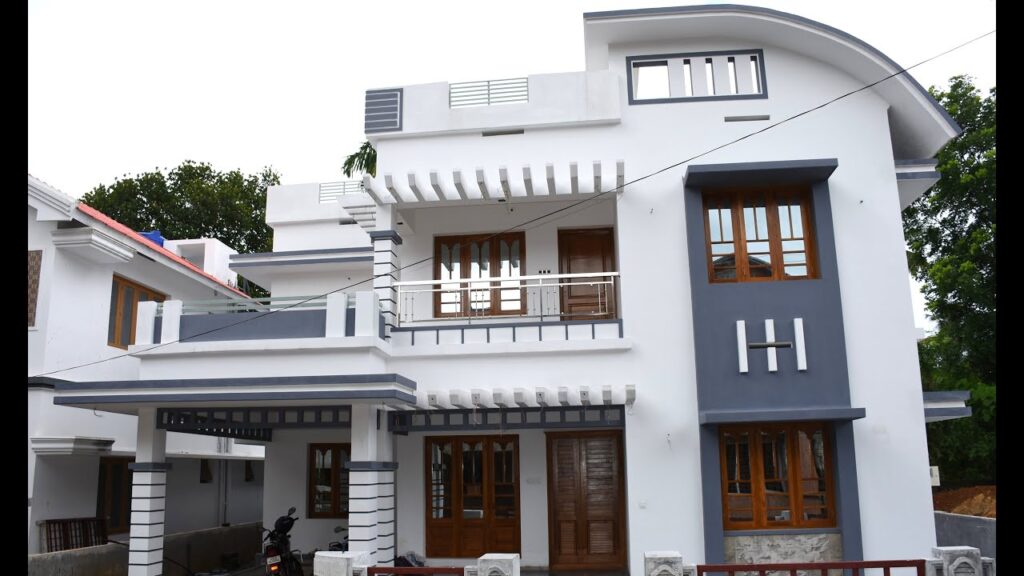Timber, a natural and renewable resource, is widely used in construction, furniture making, and various other applications. However, like any natural material, timber is susceptible to defects caused by various factors, including natural forces and insect infestations. In this article, we will explore the impact of natural forces and insects on timber, leading to seasoning defects, fungi defects, conversion defects, and insect-induced defects.
1. Seasoning Defects: The Influence of Moisture and Drying
Seasoning, the process of reducing the moisture content in timber, is crucial to enhance its strength and prevent decay. However, improper seasoning or exposure to extreme environmental conditions can result in seasoning defects.
Common Seasoning Defects
a. Checking: Checks are cracks that develop on the surface of timber due to rapid moisture loss during drying. They can compromise the integrity of the wood and reduce its strength.
b. Casehardening: Casehardening occurs when the outer layer of timber dries faster than the inner layers, resulting in tension and warping.
c. Honeycombing: Honeycombing is the development of small, irregular cavities within the timber due to uneven drying.
2. Fungi Defects: The Silent Deteriorates
Fungi, commonly known as wood-rotting organisms, are responsible for causing decay and deterioration in timber. When timber is exposed to damp and humid environments, fungi can thrive and lead to significant structural damage.
Types of Fungi Defects
a. Brown Rot: Brown rot fungi break down the cellulose and hemicellulose in timber, leaving it with a brown, crumbly appearance.
b. White Rot: White rot fungi decompose both lignin and cellulose, causing the timber to turn white and spongy.
c. Soft Rot: Soft rot fungi prefer wet but not saturated conditions, and they attack the wood’s middle lamella, causing it to become brittle.
3. Conversion Defects: The Impact of Woodworking Processes
Timber undergoes various woodworking processes during its conversion from logs to finished products. Improper handling or machining can lead to defects that affect the final quality and appearance of the wood.
Common Conversion Defects
a. Torn Grain: Torn grain occurs when wood fibers are torn or damaged during cutting or planing, resulting in rough and uneven surfaces.
b. Chip Marks: Chip marks are caused by the improper use of cutting tools, leaving visible marks on the wood surface.
c. Snipe: Snipe refers to the deeper cuts or gouges at the beginning or end of a planed surface, commonly caused by improper feeding of the wood into the planer.
4. Insect-Induced Defects: Timber Under Attack
Insects can be a significant threat to timber, as they feed on the wood and weaken its structure. Certain types of insects leave characteristic signs of their presence.
Common Insect-Induced Defects
a. Wood-Boring Insects: Wood-boring insects, such as termites and woodworms, tunnel through the timber, leaving behind galleries and holes.
b. Carpenter Ants: Carpenter ants excavate galleries within the wood to create nests, causing significant damage.
c. Powderpost Beetles: Powderpost beetles create small, round exit holes in the wood surface, along with a fine powder-like frass.
Conclusion: Preserving the Integrity of Timber
Timber defects caused by natural forces and insects can have a detrimental impact on its quality and usability. To preserve the integrity of timber, it is essential to implement proper seasoning techniques, protect it from excessive moisture, and take preventive measures against insect infestations.
As consumers and woodworkers, being aware of these defects allows us to make informed decisions when selecting and using timber for various applications. By understanding the causes and signs of defects, we can ensure the longevity and durability of our wooden creations and appreciate the beauty and resilience of this remarkable natural resource.
============================================
Timber: Nature’s Versatile Gift for Construction and Beyond
Timber, also known as lumber or wood, has been a fundamental building material for thousands of years. Its versatility, durability, and renewable nature have made it a preferred choice for various applications, from construction to furniture making and beyond. In this article, we will explore the wonders of timber and its many uses in modern society.
The Origin and Properties of Timber
Timber is obtained from trees, which are among the most valuable natural resources on Earth. Trees are meticulously harvested from sustainably managed forests, ensuring a continuous supply of this valuable material. The most common types of timber used in construction and woodworking include softwood (from coniferous trees) and hardwood (from deciduous trees).
Timber possesses several essential properties that contribute to its popularity:
- Strength and Durability: Timber is renowned for its strength-to-weight ratio, making it an ideal material for structural elements. Properly treated timber can resist decay, termites, and other pests, ensuring its longevity.
- Workability: Timber is easy to work with using traditional woodworking tools, allowing for intricate designs and precise cuts.
- Insulating Properties: Timber exhibits excellent thermal and acoustic insulation, contributing to energy efficiency in buildings.
- Aesthetics: The natural beauty of timber adds warmth and character to any space, making it a preferred choice for interior design.
Applications in Construction
Timber has a long history of use in construction, and its applications continue to expand due to advancements in engineering and treatment techniques. Some of the primary uses of timber in construction include:
1. Framing and Structural Support:
Timber is commonly used for framing structures such as houses, buildings, and bridges. Its strength and flexibility make it an excellent choice for load-bearing elements like beams, columns, and trusses.
2. Flooring and Decking:
Timber flooring provides a warm and inviting atmosphere in residential and commercial spaces. Additionally, timber decking is popular for outdoor areas, adding natural charm to patios and gardens.
3. Cladding and Siding:
Timber cladding and siding offer protection and insulation to buildings while enhancing their aesthetic appeal. They come in various profiles and finishes, allowing for creative architectural designs.
4. Roofing:
Timber roofing materials, such as shingles and shakes, are durable and provide excellent insulation for homes in various climates.
Versatility in Woodworking and Furniture Making
Timber is the heart and soul of woodworking and furniture making. Its workability and aesthetic appeal make it a preferred choice for crafting various items:
1. Furniture:
Timber furniture is both functional and aesthetically pleasing. From classic designs to modern styles, timber furniture adds elegance and charm to any interior space.
2. Cabinetry:
Timber cabinetry offers timeless beauty and practical storage solutions for kitchens, bathrooms, and other living spaces.
3. Art and Sculpture:
Many artists and sculptors use timber as a medium to create intricate and captivating works of art.
4. Craftsmanship:
Timber is used in crafting various items, including toys, decorative pieces, and musical instruments.
Sustainability and Environmental Benefits
One of the most significant advantages of timber is its sustainability. Responsibly managed forests ensure the continuous growth and replanting of trees, making timber an environmentally friendly choice for construction and manufacturing.
Timber also sequesters carbon dioxide, helping to mitigate the impact of greenhouse gases on the environment. When responsibly harvested and replanted, trees play a vital role in maintaining ecological balance and biodiversity.
Conclusion: Embracing the Timeless Beauty of Timber
Timber’s versatility, durability, and eco-friendliness have solidified its place as a timeless building material. From the grandeur of structural beams to the intricate details of furniture, timber continues to inspire creativity and craftsmanship across industries.
As we embrace sustainable practices and renewable resources, timber remains a symbol of our connection to nature and our commitment to building a better and greener future.
============================================







